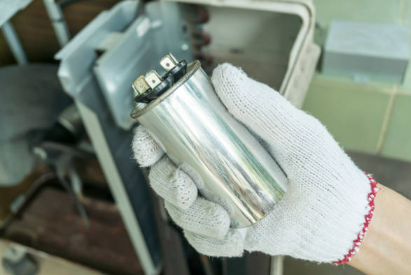9 usages of ceramics in home electronics?
9 usages of ceramics in home electronics?
Ceramics are used in many aspects of home electronic devices due to their unique characteristics, such as heat resistance and electrical insulation,and they can be used in a variety of ways to improve home electronics.So how many ways that ceramics use in home electronics?Let's start our passage and find out the answer!
Ceramics is used to manufacture printed circuit boards. Ceramic substrates can be used in electronic circuits which generate high temperatures. They are good insulators, and they can also withstand very high temperatures.
Produce capacitors and resistors. Ceramic capacitors have a wide range of applications in electronic circuits due to their reliability, stability and ability resist high voltages. Ceramic resistors are widely used in electronic devices because they offer stable resistance values.
- Used to package semiconductor chips.Ceramic packaging is excellent in terms of thermal insulation and conductivity, which helps to protect electronic components and disperse heat efficiently.
- In home electronics, ceramics is used to create insulators and enclosures.Ceramics offer thermal insulation, electric insulation, and protection from environmental factors such as moisture and corrosion.
- Heating Elements.Some types of ceramics are used as heating elements in electric cooktops or microwave ovens.
- Speaker Components.Ceramic materials, like tweeters, are used to make speaker components. They produce a clear sound, and can withstand high temperatures.
- Glass-Ceramic Cooktops.While not strictly electronics, the glass-ceramic material is used for cooktops because of its thermal properties. This allows even heat distribution, and it resists thermal shock.
Ceramics have the potential to provide higher energy density and safety compared to lithium-ion battery.
What are the similarities between metal based components and ceramic baed components?
Metal-based components and ceramic-based components, despite their differences in material composition, share several similarities:
-Mechanical Properties: Both metals and ceramics exhibit high mechanical strength, although through different mechanisms. Metals often have high ductility and can deform plastically, while ceramics are typically brittle but have high compressive strength.
-Conductivity: Metals are known for their excellent electrical conductivity, allowing them to conduct electricity efficiently. In contrast, ceramics are typically insulators, but certain types like conductive ceramics or semiconductors can exhibit electrical conductivity to some extent.
-Thermal Properties: Both metals and ceramics have good thermal properties but behave differently. Metals have high thermal conductivity, allowing them to conduct heat effectively, while ceramics can have low thermal conductivity but high thermal resistance, making them suitable for insulating applications.
-Manufacturability: Both materials can be shaped and formed into components through various manufacturing processes. Metals can be machined, cast, welded, and forged, while ceramics can be molded, sintered, and formed using specific ceramic processing techniques.
-Usage in Electronics: Both metals and ceramics find applications in electronic components. Metals are commonly used in wiring, connectors, and heat sinks due to their conductivity and heat dissipation properties. Ceramics, on the other hand, are used for insulating substrates, capacitors, resistors, and other components requiring electrical insulation or thermal resistance.
-Resistance to Corrosion: Certain metals and ceramics exhibit resistance to corrosion. Metals like stainless steel and some ceramic materials are resistant to chemical reactions and degradation when exposed to harsh environments.
-Environmental Resistance: Both metals and ceramics can withstand extreme environmental conditions, though their specific responses can differ. Metals might undergo oxidation or rusting, while ceramics may remain inert but can be prone to fracture under certain conditions.
-Diverse Applications: Both metals and ceramics have diverse applications across industries. Metals are used extensively in construction, machinery, automotive, and aerospace, while ceramics find applications in electronics, aerospace (for heat-resistant tiles), medical implants, and various consumer products.
Despite their differences in fundamental properties, both metals and ceramics offer unique characteristics that make them essential materials across various industries, contributing to the functionality and reliability of products and components in their respective applications.
Why are ceramic materials so useful in manufacturing electronics?
Ceramic materials offer several advantageous properties that make them highly useful in manufacturing electronics:
Given these advantageous properties, ceramics find extensive use in the production of electronic components, contributing significantly to the reliability, efficiency, and performance of electronic devices across various industries.
If you still have any electronics products need, please feel free to contact us at any time.


